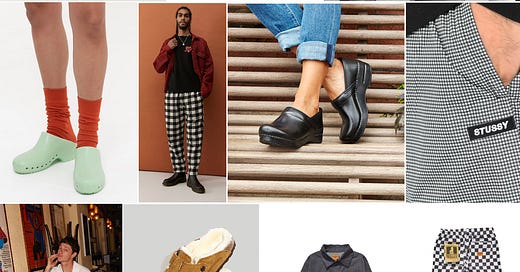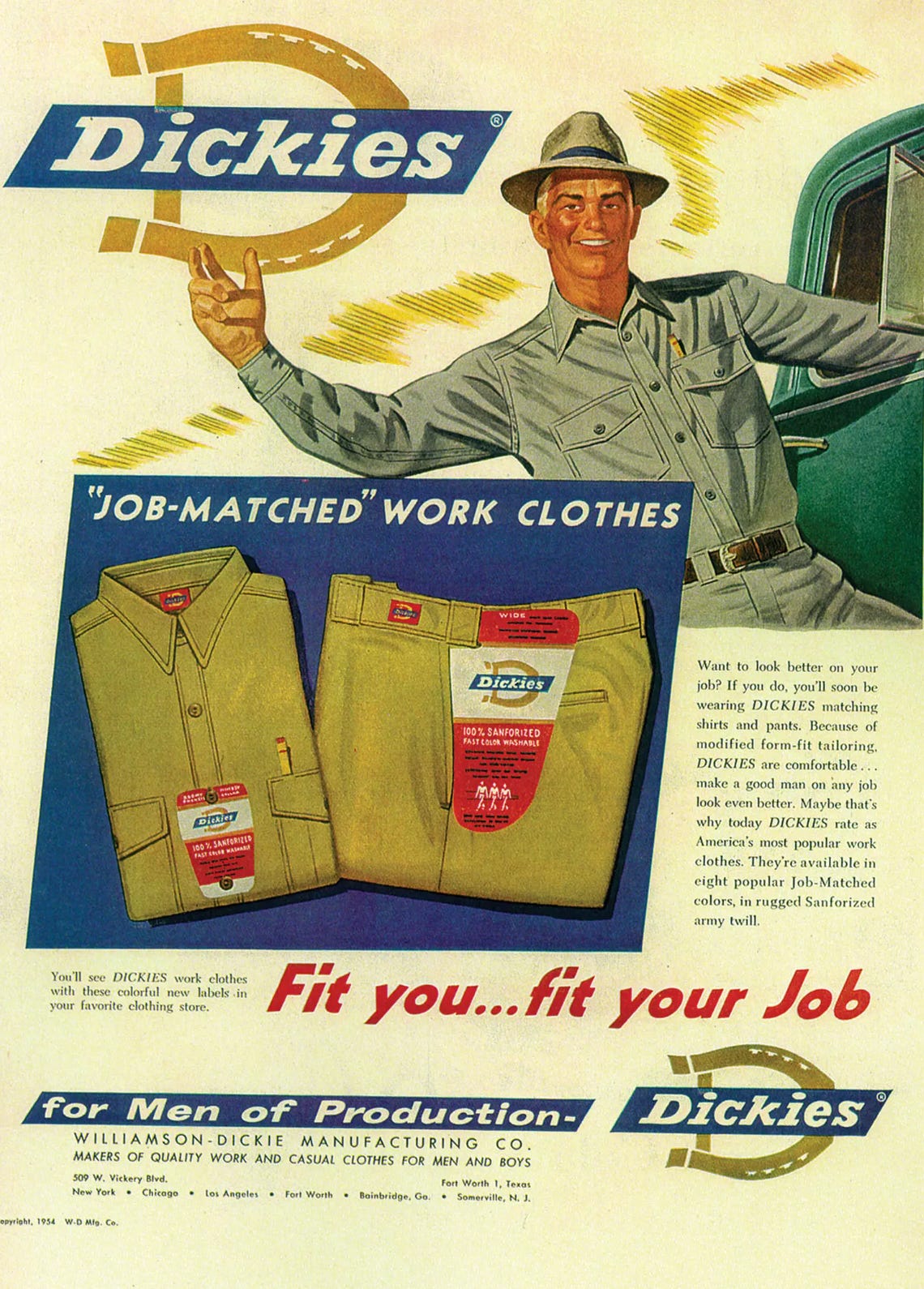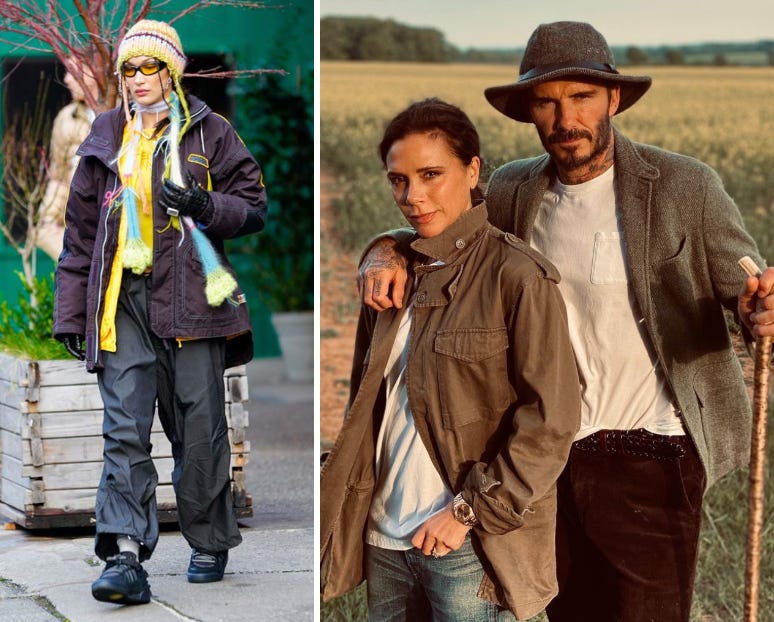Hello!
The Ómós Digest is a reader-supported publication, of which all contributors are paid. Please consider supporting this continued writing, research, and expanding our amazing team by upgrading to a paid subscription for €5 a month or €50 a year. This newsletter brings you on that journey about the food you were looking for, or perhaps never knew existed. It is our quest to expand on what we don’t know and to share with those who care.
Everybody who works in a kitchen will at some point in their career have the unfortunate opportunity of wearing very unflattering and itchy chef whites. There’s nothing quite like the feeling of that super starched material on your sweaty skin to make you realise you’ve ‘made it’. I’m joking of course, this uniform is the pits (in my opinion). Especially for me, a very petite woman (if I wanted to buy and wear kids’ clothes I could) - finding an XS chef’s jacket in the pile provided by an employer is like finding a needle in a haystack. When I do find a jacket, XS or not, I look like I’m wearing an oversized boyfriend’s t-shirt and not in a cute way but a ridiculous clown kind of way. The sleeves are so long I have to roll them up a million times and they get caught on everything I walk past. A jacket that’s meant to be designed for safety becomes not so safe after all! Luckily enough, I quite quickly opted out of this look in favour of more laidback bakery dressing. This uniform consists of black jeans or shorts in summer, a slogan white tee I picked up from my favourite pizza places and bakeries from around the world and stompy Blundstone boots. I prefer this ‘uniform’ because it doesn’t make me feel restricted in the same way that classic French chefwear does, both physically and mentally.
This informal style also lends itself nicely to my 2am call time. Unlike most other professions, I’m not blessed with a lot of time in the morning. There’s no deliberation over my hair and makeup or what outfit looks best. It’s a get up and go situation for me. I throw on my clothes, brush my teeth and get out the door. I also know that 99% of the time I’m going to get absolutely caked in flour throughout the day. This means I’m not so fussed about having extreme attention to detail in the same way someone working in a fine dining restaurant might. Although on the surface it might seem as if there is a lack of care on how I present myself, there isn’t (well, I guess in some respect there is, as it's a futile endeavour wiping away continual dustings of flour). I care about how this ‘uniform’ makes me feel. Firstly, it allows me to express my identity through my collection of slogan tees, which although slightly faded now, have received many positive comments from people I work with. Once on a stage, someone asked me ‘how do you have so many cool tees?’ Obviously, I blushed and felt like I had ‘made it’ in my own way. Not only this, but wearing t-shirts (whether my own or the bakery’s merch) allows me to feel comfortable and less under pressure. This is, of course, the whole point of workwear - to be comfortable! Stripped away from starchy pretences, I generally feel more like myself and we all know that when we feel good, we bake better!
The comfort of workwear has been a long time in the making. Brands such as Levi’s, Carhartt and Dickies have been around for generations. Originally their designs were manufactured to suit American cowboys, ranch hands, miners, soldiers, marines and more. The brands used durable fabrics that were meant to last a lifetime (which is why you can find Gen Z’s wearing vintage workwear apparel that looks only slightly aged). These fabrics and styles permeated into mainstream fashion from the 1950s onwards, when wearing Levi’s 501s became a uniform for the teenage rebel. The transition of workwear into streetwear gradually escalated throughout the decades. In the 80s and 90s, we saw infamous rappers and hip-hop stars of the time, such as Tupac and Eazy-E, wearing these brands. The tough fabric and baggy fit connected these artists with their working class roots and was/is synonymous with their gritty lyrics. The durability and comfort of these clothes, as well as their connection to music, is what made people want to buy them. I totally appreciate the appeal in this - who didn’t grow up wanting to look like their favourite star or to fit in? Now, the shift towards wearing clothes manufactured for the food industry is having its moment. But why?
The fallout from the pandemic has meant an increase in wearing comfortable clothes. If there was ever a time you could wear your pyjamas or sweatpants all day, every day, it was then! This time forced us all into domesticity and increased our hours spent in the kitchen. Now that we’re out of it, we’re looking to carry forward that relaxed uniform while also trying to look on point. This has resulted in a surge in carpenter jeans, Birkenstock clogs, painter’s jackets, Blundstone boots, Crocs, Cookman kitchen pants and more brands associated with the food industry filling up the highstreet shelves. Even some restaurants and chefs (the likes of St John’s, Matty Matheson and Molly Baz) are cashing in on this hype by creating their own branded apparel for chefs and everyone else to wear. I’m particularly fascinated by this sort of fetishism that the general public has with chefs, especially the passionate and intense male ones. It seems as if by buying into this ‘uniform’ we are subconsciously assigning ourselves to this similar identity, a knife-wrap-holding, microplane-wielding one. It’s a sort of cosplay, where for a moment, we get to embody the people we admire.

So what happens when you’re no longer part of this club?
Over the last few months my work has temporarily shifted and I now wander the freelance realms, where my routine and what I wear is not so regimented. I no longer throw on my ‘uniform’ in the middle of the night. Instead, I endlessly deliberate what I’m going to wear to my home office and kitchen and in the end, nothing seems to feel right. I’ve tried to dabble in this ‘chefcore’ style but I can’t seem to find anything that fits as few brands are tailored towards women. Without this uniform I feel as if I’ve lost a little bit of my identity. This is the whole crux of why we assign people to wear uniforms in the first place. It allows individuals to become involved in an already established social construct. There are of course limitations and dangers to wearing a uniform, like herd mentality. Yet, there are also the positives, which include a sense of camaraderie. Now that I predominantly work from home, I do not have this luxury. There is no opportunity to bounce ideas off someone, to hear their thoughts, to learn a new trick or two, or to feel in it together. Instead, I am forced to generate ideas on my own and lemme tell ya, sometimes these just don’t come! It’s in these moments when you really need someone to be your cheerleader, ‘come on, you got this!’, ‘hey, have you tried doing it like this…’ or ‘oh, don’t worry, it’s just one of those things! We can try again tomorrow’.
Alongside this, I don’t seem to have the same productivity levels. Working in a kitchen predetermines the structure of your day: mise-en-place, service, clean down. Repeat. Now, I have more time to doom-scroll, unnecessarily clean and get distracted by the dog. Recently I listened to a podcast all about productivity. The host and guest psychologist discussed how most human behaviour is dictated by the need to relieve pain, which is why we are so prone to distraction. For example, when you’re trying to accomplish a task and it’s hard (much like I was all month with this article) you start to feel restless or anxious which are internal triggers signalling, ‘let’s go do something else to stop you feeling this way’. Learning ways to overcome procrastination involves, according to him, doing away with to-do lists and not thinking of tasks as an output that must be finished in order to feel accomplishment. This way of thinking is not necessarily easy for someone who, as mentioned, works to a pretty tight schedule. The output or the reward in the kitchen is the satisfaction of seeing something complete from nose to tail. This could be true for other individuals who do manual labour. The task is only complete when the building has been built or the garden has been landscaped.
If identity, inclusion and productivity are all tied up by what we wear, is this the reason then we’re seeing a rise in not only ‘chefcore’ but ‘farmcore’ (a look inspired by rural living) and ‘gorpcore’ (a look based on the outdoors - think Patagonia fleeces, Salomons and Gore-Tex)? By wearing these types of clothes, even if it’s in a fashion, clean, pristine kind of way (no dirt to be seen), are we attempting to rebel against our technologically saturated world (like those 1950s Levi wearing rebels) in a way that attempts to bring us closer to the physical work of our predecessors? Or, is it more that we all just want to fit in? Or, do we all just want to be comfortable and look cool?








One of our readers shared with us a STUNNING workwear brand we know you'll love. Check out SUK WORKWEAR over on instagram https://www.instagram.com/sukworkwear/?hl=en
Thanks again to Cissy DIfford for such a great piece!